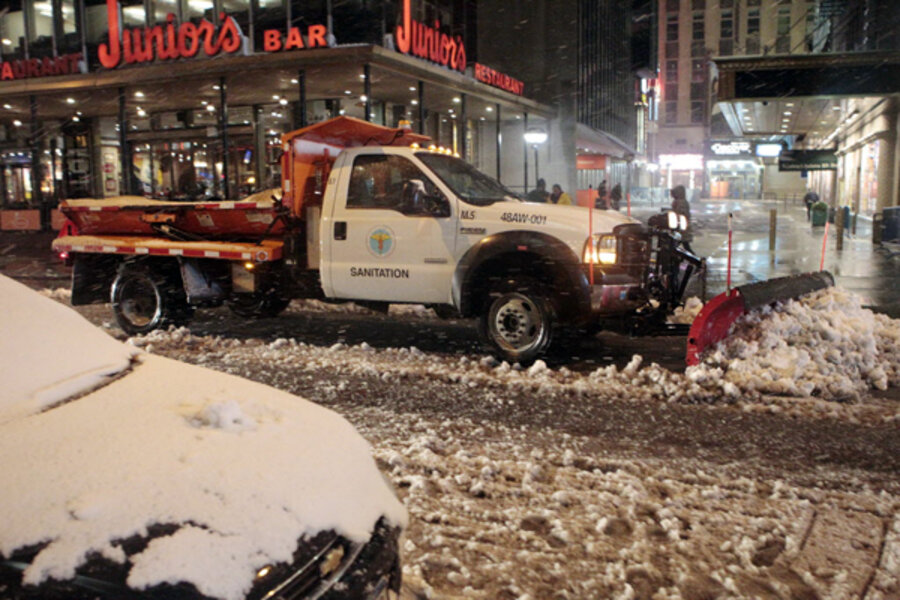Wet snow and power outages hit recovering East Coast
| NEW YORK
The New York-New Jersey region woke up to a layer of wet snow and more power outages Thursday after a new storm pushed back efforts to recover from a superstorm had left millions powerless and dozens dead last week. The storm did not bring a second wave of flooding that some had feared.
"My son had just got his power back 2 days ago now along comes this nor'easter and it's out again," Mark L. Fendrick, of New York City's Staten Island, tweeted.
Households in the country's most densely populated region that had waited for days without power after Superstorm Sandy were plunged back into darkness, with temperatures near freezing.
But the new storm didn't appear to rouse exhausted residents to a new chorus of complaints.
"Things are not worse, and for that I am thankful," said Iliay Bardash, 61, a Staten Island resident who has been without electricity since last week.
Roads in New Jersey and New York City were clear for Thursday's morning commute, and rail lines into New York were running smoothly, despite snow still coming down heavily in some areas.
Parts of battered New Jersey had just over 12 inches (304 millimeters) of snow overnight. Residents from Connecticut to Rhode Island saw up to 6 inches (152 millimeters).
In New Jersey, utilities reported about 390,000 power outages early Thursday. About 160,000 of those were new. In New York City and neighboring Westchester County, more than 70,000 customers were without power after the storm knocked out an additional 55,000 customers. Long Island had 60,000 new outages in a region where 300,000 customers were already without power.
"I am waiting for the locusts and pestilence next," New Jersey Gov. Chris Christie said Wednesday as thestorm approached, public works crews built up dunes to protect the coast and new shelters opened.
Airlines canceled at least 1,300 U.S. flights in and out of the New York metropolitan area Wednesday, causing a new round of disruptions that rippled across the country.
The region's greatest challenge remains finding emergency housing for tens of thousands of people, in some cases for the long term.
The Federal Emergency Management Agency has said 95,000 people in New York and New Jersey are eligible for emergency housing assistance.





